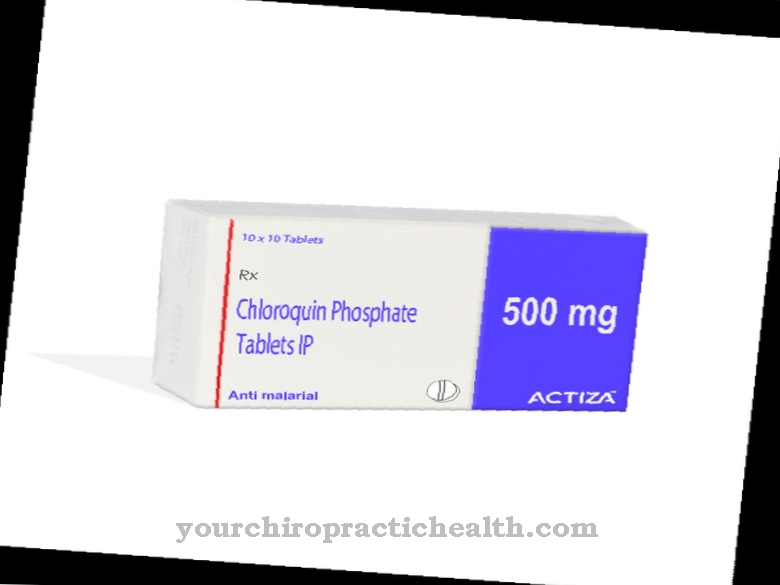At Benzyl penicillin it is a classic form of penicillin. The antibiotic ingredient is also called Penicillin G known.
What is Benzylpenicillin?
Benzylpenicillin, also called penicillin G, is one of the antibiotics. It comes from the beta-lactam antibiotics and is used to treat various bacterial infectious diseases.
The discovery of benzylpenicillin took place in 1928 by the Scottish bacteriologist Alexander Fleming (1881-1955). The physician was awarded the Nobel Prize in 1945 for the discovery of the antibiotic penicillin. Penicillin G is produced by the mold Penicillium notatum. Even today, benzylpenicillin is obtained fermentatively from fungal cultures and not in a synthetic way.
Penicillin G is considered the parent substance of all penicillins. A large number of derivatives emerged from it, the properties of which changed. The disadvantages of the substance include its sensitivity to the bacterial enzyme penicillinase and oral ineffectiveness due to acid instability. For this reason, benzylpenicillin can only be administered by bypassing the intestine.
Pharmacological effect
Benzylpenicillin has a bacteriostatic effect. Its spectrum of activity includes gram-positive bacteria, gram-negative anaerobic rods, gram-negative cocci and spirochetes. Meningococci, pneumococci, clostridia, borrelia, corynebacteria, non-penicillin-forming staphylococci, alpha- and beta-hemolytic streptococci, leptospira, bacteroides species as well as Treponema pallidum and Bacillus anthracis are considered to be penicillin G-sensitive.
However, the number of bacterial strains that are resistant to penicillin G has continued to increase in recent years. This is especially true of the gonococci.
Benzylpenicillin has the effect of inhibiting the growth of bacteria. For this purpose, the cell wall of the germs is blocked by the antibiotic substance. However, some bacteria have the ability to destroy penicillin G because they are endowed with the protein beta-lactam. In this way they achieve a natural resistance to the drug.
Since oral intake is ineffective due to the breakdown of the substance by gastric acid, benzylpenicillin must always be administered in the form of an infusion or injection. However, because the duration of the antibiotic's effect is very short, it is necessary to administer it several times a day. A longer-acting benzylpenicillin is benzylpenicillin-benzathine, which can be administered once a week or a month.
After a short infusion, there is a rapid increase in the plasma concentration of penicillin G. However, after just five hours the active substance falls just as quickly. In the case of intramuscular administration, absorption is complete after about 30 minutes. The plasma concentration is lower than that of an intravenous infusion. Benzylpenicillin is broken down from the body primarily via the kidneys. There is hardly any metabolism.
The extent to which penicillin G is concentrated in the individual body tissues varies. There are relatively high concentrations in the kidneys, liver and lungs, while they are quite low in the bones and brain.
Medical application & use
Benzylpenicillin is suitable for the treatment of infections whose bacterial originators are sensitive to the antibiotic. These are respiratory diseases, infections in the ear, nose and throat region, vaginal infections and laryngitis. Endocarditis (inflammation of the inner lining of the heart), meningitis (inflammation of the meninges), osteomyelitis (inflammation of the bone marrow), sepsis (blood poisoning), peritonitis (peritonitis) or skin infections can be effectively treated with penicillin G. Further indications are rheumatic fever, leptospirosis, scarlet fever, anthrax, diphtheria, Lyme disease, gas burn and syphilis.
In the case of wound infection or tetanus, however, a check is necessary, since the pathogens are usually insensitive to benzylpenicillin. In some diseases, penicillin G is also combined with another antibiotic.
How high the dose of benzylpenicillin is depends on the disease in question. Dosing takes place in International Units (IU). One million IU are called ME. The maximum dosage is 10 ME, which can be administered up to four times per day.
Risks & side effects
Treatment with penicillin G can sometimes result in undesirable side effects. These include diarrhea, gas, nausea, vomiting, changes in taste, allergic reactions such as severe rash or hives, agranulocytosis, dry mouth, kidney inflammation, anemia, serum sickness, inflamed blood vessels, muscle twitching and cramps. Some people also experience swelling and pain at the injection site.
If the patient has to undergo treatment with benzylpenicillin for a long time, there is a risk of fungal or bacterial infestation of the colon. As a result, there is a risk of bowel inflammation, which is accompanied by diarrhea. In this case, the treatment must be stopped immediately after consulting the attending physician. Instead, other antibiotics will be used later.
Penicillin G must not be administered at all if the patient is hypersensitive to penicillins. If the patient suffers from special forms of leukemia or Pfeiffer's glandular fever, the doctor must carefully weigh the risk and benefit for the patient prior to administration.
The use of penicillin G during pregnancy is considered harmless. However, it is important to consult your doctor. Since the antibiotic active ingredient can pass into the baby through breast milk, there is a risk of disturbances to the children's intestinal flora. The infants affected suffer from diarrhea and intestinal inflammation. In addition, allergic reactions can develop later. It is therefore recommended that you consult your doctor before using the antibiotic even if you are breastfeeding.
Because benzylpenicillin affects the intestinal flora and can cause diarrhea, it is possible that hormonal contraceptives such as birth control pills may be less effective. For this reason, the use of diaphragms or condoms is recommended.












.jpg)



.jpg)










.jpg)
